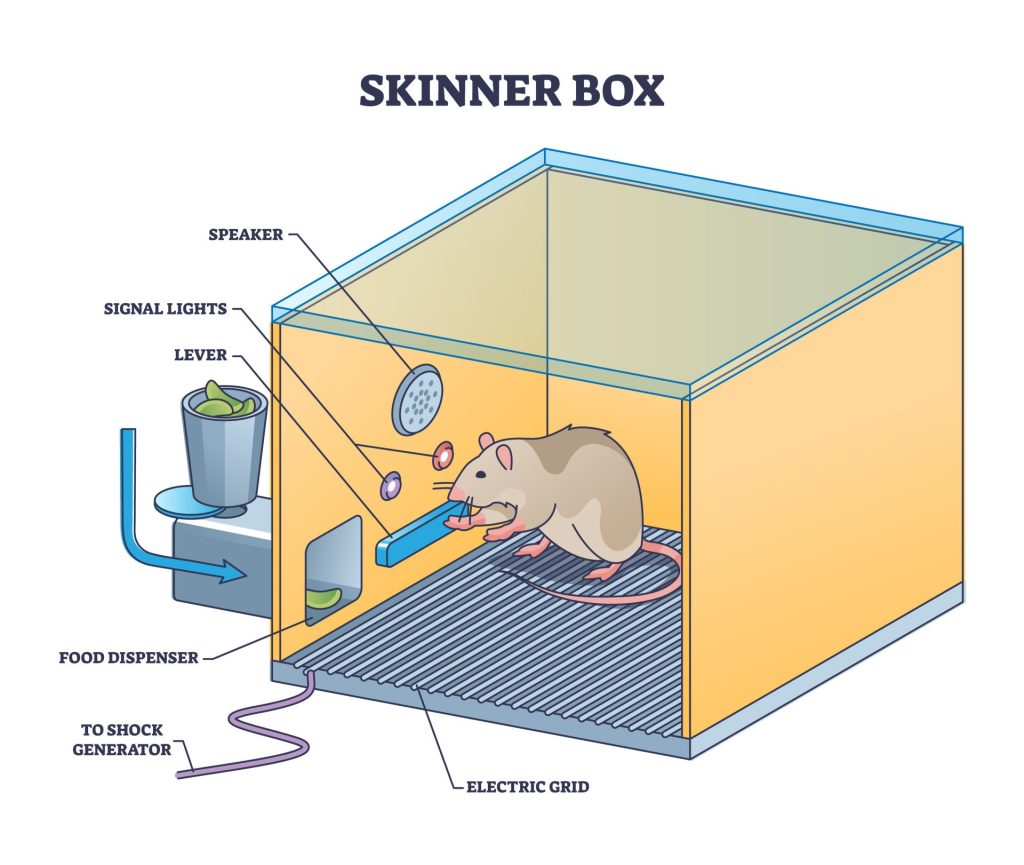Understanding Stress Signals in Rodents as Pets

The Importance of Understanding Rodent Stress Signals
Having a rodent as a pet, such as a hamster, guinea pig, or rat, can bring joy and companionship into your home. These small creatures may seem resilient, but they possess a complex emotional landscape that can significantly affect their health and happiness. Recognizing and addressing the stress signals in your pet can enhance your relationship and improve their overall quality of life.
Changes in Behavior
One of the most telling indicators of stress is changes in behavior. An otherwise friendly pet may suddenly exhibit signs of aggression, such as biting or hissing, particularly when approached or handled. This aggressive behavior may be a defense mechanism stemming from fear or discomfort. Additionally, if your pet is spending excessive amounts of time hiding, it could indicate they are feeling vulnerable or overwhelmed by their environment. Even an increase in grooming behavior, often referred to as barbering, can signal stress, as rodents sometimes groom excessively to cope with anxiety.
Physical Symptoms
Physical changes can also serve as important clues to your pet’s emotional state. Physical symptoms like weight loss, droopy ears, or fur loss can indicate that your rodent is stressed or experiencing health problems. For example, if you notice your pet is eating significantly less than usual or exhibiting signs of lethargy, it’s essential to consult a veterinarian. Be vigilant for fur loss, which may occur because of stress-related behaviors or underlying health issues. Rodent skin conditions can manifest due to constant scratching or biting, highlighting the necessity of a stress-free living environment.
Vocalizations
Rodents are vocal creatures that use sounds to communicate their emotions. Vocalizations such as high-pitched squeaks or incessant chittering often indicate distress or anxiety. For example, a stressed guinea pig may produce loud, frantic sounds, signaling discomfort with their surroundings. These vocal cues can serve as a guide; if you notice a sudden increase in the frequency or volume of your pet’s sounds, it’s a clear prompt to assess their environment and overall well-being.
Creating a Supportive Environment
Recognizing these signs is more than just being attentive; it entails transforming your pet’s living space into a haven of comfort. Ensure your rodent has access to enriching toys, adequate space for exploration, and a stress-free routine. This might include regular handling, providing a consistent feeding schedule, and ensuring their habitat is clean and secure from potential threats. By remaining observant and responsive to your rodent’s unique personality and needs, you can significantly contribute to their happiness and health.

Rodents may appear small, but they have big feelings. Understanding and responding to their stress signals not only strengthens the bond between you and your pet but also cultivates an enriching environment where they can flourish. In doing so, both you and your furry friend can experience a fulfilling companionship that will grow stronger over time.
DISCOVER MORE: Click here for essential care tips
Signs of Stress in Your Pet Rodent
Understanding the stress signals of your pet rodents is crucial for their well-being and your peace of mind. As small animals, rodents can easily become overwhelmed by their surroundings, leading to a wide range of behavioral and physical responses. By recognizing these signals early, you can take action to alleviate their discomfort and enhance their quality of life. Let’s take a deeper look into some key indicators of stress in rodents that every pet owner should be aware of.
Behavioral Changes
Behavioral changes are often the first noticeable signals of stress in rodents. Common behavioral changes include:
- Increased Aggression: If your typically docile pet begins to display aggressive behaviors such as biting or chasing, it is a strong indication of stress. This can be a direct result of fear or anxiety triggered by environmental changes or handling techniques.
- Hiding: Rodents tend to seek refuge when they feel threatened. If you notice your pet spending an excessive amount of time in its hideaways, it could suggest that they are feeling insecure in their space.
- Excessive Grooming: Grooming is a natural behavior, but when taken to the extreme, it can become a sign of stress. This behavior, often termed barbering, may lead to bald patches or skin irritation.
Physical Indicators
Alongside behavioral changes, physical symptoms can provide insight into your pet’s stress levels. It is vital to maintain a watchful eye for the following signs:
- Weight Fluctuations: Sudden weight loss or weight gain can indicate stress or health issues. Changes in appetite can affect your pet’s weight significantly.
- Droopy Ears: When a rodent’s ears are drooping, it generally signals that the animal is feeling unwell or stressed. A healthy rodent typically has upright and alert ears.
- Fur Loss: Shedding or patchy bald spots can arise from self-induced trauma due to excessive scratching or biting – behaviors often linked to stress or discomfort.
Vocal Communication
Rodents are surprisingly vocal, utilizing a variety of sounds to convey their feelings. Understanding vocalizations can serve as a useful tool in identifying stress. For example, if a gerbil or rat begins to emit high-pitched squeaks or distressed chattering, it may suggest they are frightened or anxious. Noticing a change in your rodent’s vocal behavior can help you pinpoint the source of their distress and take appropriate action.
By being observant and understanding these stress signals, you can create a loving environment that supports your pet rodent’s emotional health. In the next section, we will discuss how to create a supportive habitat that mitigates stress, helping your furry companion thrive in your home.
| Stress Indicators | Understanding Behavior |
|---|---|
| Vocalizations | High-pitched squeaks can indicate discomfort or fear. |
| Body Language | A puffed-up posture often means your pet is trying to appear larger when threatened. |
| Hiding Behavior | If your rodent seeks refuge, it can suggest that they are overwhelmed. |
| Rtaining Aggression | Biting or aggressive actions can be a warning sign of extreme stress. |
Understanding the various stress indicators in rodents is vital for pet owners who wish to create a comfortable environment for their small companions. These signs can help you quickly identify when your pet is feeling anxious or threatened, thus allowing you to respond appropriately to their needs. For instance, watching for vocalizations such as squeaks can signify discomfort, while alterations in body language can provide insight into your pet’s emotional state. A puffed-up posture is a classic indicator they are feeling threatened. Additionally, if your furry friend often retreats to hidden spots, it may be a sign they are overwhelmed and in need of a calm space. Each of these behaviors sheds light on the intricate emotional world of rodents, and being attuned to these signals can enhance the bond between you and your pet. This understanding not only promotes better care but can also cultivate a serene atmosphere that allows your rodent to thrive. By learning to read these stress signals, you can ensure that your pet feels safe, reducing anxiety and promoting overall well-being.
DISCOVER MORE: Click here to learn about the importance of a balanced diet for your pet’s health
Creating a Supportive Environment
Recognizing and understanding the stress signals of your pet rodent is only the first step in ensuring their emotional well-being. The next crucial aspect involves creating an environment that reduces stress and fosters comfort. Rodents, being highly social and sensitive creatures, thrive in an atmosphere that mimics their natural habitat. Here are some strategies to promote a serene environment for your furry companion.
Environmental Enrichment
Environmental enrichment is vital for pet rodents, as it engages their natural instincts and keeps them mentally stimulated. Simple items like tunnels, chew toys, and climbing structures can significantly enhance their habitat. For example, providing cardboard tubes or wooden blocks will encourage play and exploration, satisfying their innate curiosity. Furthermore, regularly rotating these items can maintain their interest and excitement within their enclosure.
Comfortable Shelter
A well-designed shelter can provide your pet rodent with a safe space to retreat when feeling overwhelmed. Ensure that your rodent has access to a cozy hiding spot, such as a small igloo or a soft, nesting material like shredded paper or hay. The ability to retreat to a shaded and enclosed area gives your rodent a sense of security and control over their space, thereby reducing stress levels.
Social Interaction
If you own multiple rodents, allow them to socialize, as companionship plays a crucial role in their happiness. Rodents are inherently social creatures and can experience anxiety when isolated. Monitor their interactions, ensuring that they can communicate and play without any signs of aggression or distress. For lone rodents, like a hamster, ensure they receive adequate interaction with you, the owner, to fulfill their social needs.
Consistent Routine
Establishing a consistent routine for feeding, cleaning, and playtime can greatly reduce uncertainty, leading to a calmer environment. Rodents thrive on predictability, and a structured routine allows them to feel secure and in control. Be mindful of any changes in your schedule that could disturb their daily rhythm, leading to unnecessary stress.
Noise and Activity Level
A quiet and low-traffic area in your home is ideal for pet rodents, as loud noises and chaotic activity can be overwhelming. If possible, designate a specific zone for their habitat away from TVs, loud conversations, or pet commotion. Additionally, consider the frequencies of sounds, as rodents can be sensitive to high-pitched noises like those from electronic devices. Aim to create a tranquil atmosphere that allows your rodent to feel safe.
Health Checks and Veterinary Care
Regular health checks are essential not only for maintaining your rodent’s physical health but also for their mental well-being. Stress can often manifest in physical conditions, so monitoring any changes in behavior or health should prompt a consultation with a veterinarian. Schedule routine check-ups and remain attentive to any unusual behaviors that might warrant professional advice.
By adopting these practices, you can ensure your pet rodent experiences less stress and more happiness. Understanding their needs and taking proactive steps to create a supportive environment will ultimately lead to a more fulfilling bond between you and your furry friend.
DISCOVER MORE: Click here for effective strategies
Conclusion
In conclusion, understanding stress signals in rodents as pets is a vital component in nurturing their health and happiness. As sensitive and highly social creatures, rodents require keen observation and careful attention to their behavior and environment. The ability to identify stress signals—such as changes in grooming habits, vocalizations, or social withdrawal—can empower pet owners to address their pet’s needs effectively.
Creating a nurturing space that includes environmental enrichment, sufficient social interaction, and a consistent routine can significantly alleviate stress in these furry companions. The establishment of a calm atmosphere, free from excessive noise and disruption, will allow your rodent to thrive and feel secure. Furthermore, maintaining ongoing health checks with a veterinarian ensures that any potential health issues, which may stem from or contribute to stress, are addressed promptly.
As you embark on this rewarding journey of pet ownership, remember that your rodent depends on you for guidance and comfort. By prioritizing their emotional and physical well-being, you’ll cultivate a deeper bond that enhances both your lives. For those interested in diving deeper into rodent care and behavioral nuances, numerous resources and communities are available to help pet owners become more informed and equipped to provide the best care possible.
In essence, understanding and responding to the stress signals of your pet rodent not only leads to a happier pet but also enriches the connection you share, making for a more harmonious home environment. Take proactive steps today to ensure your furry friend thrives in a supportive and loving setting.



